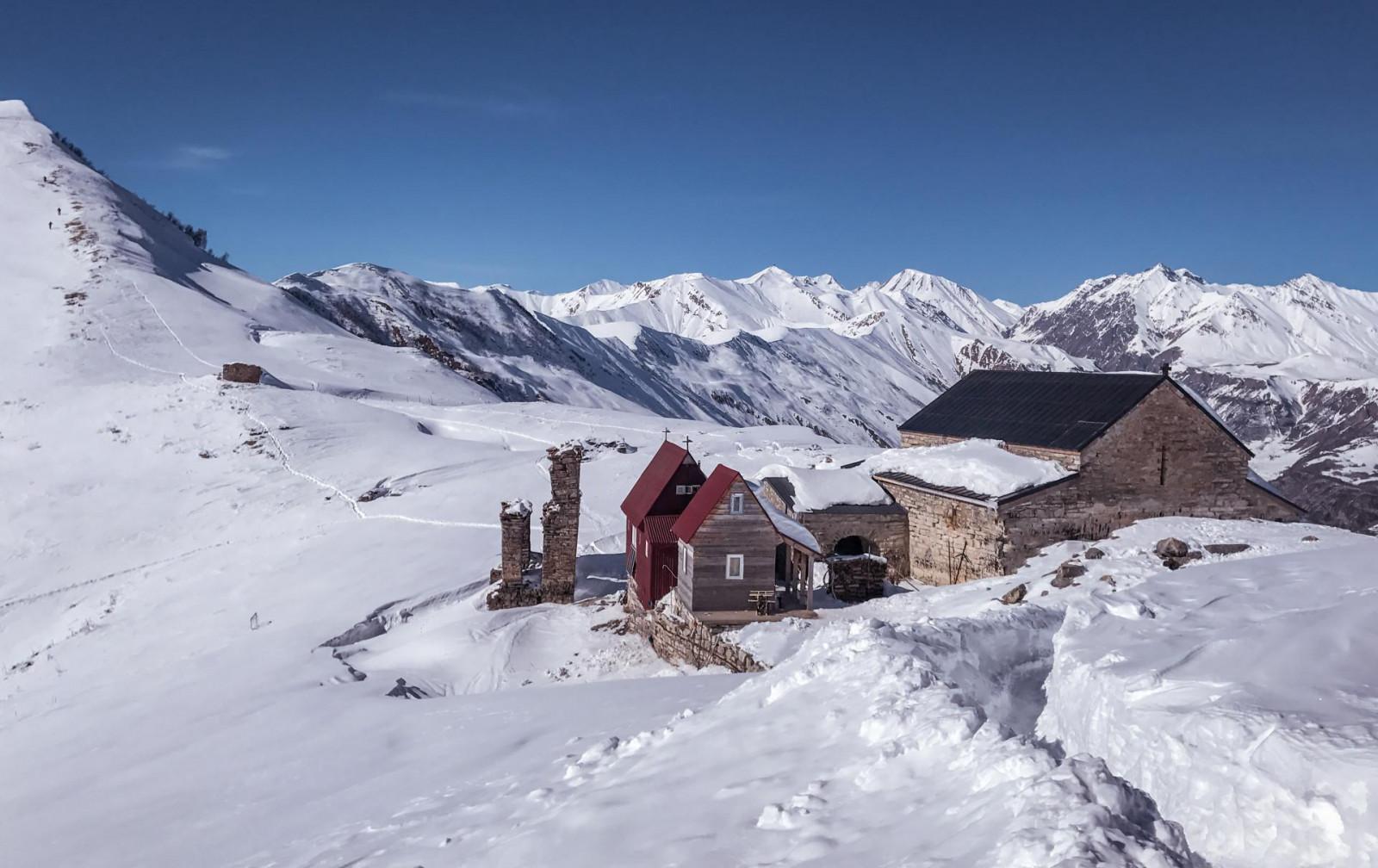Lomisoba
Georgia is distinguished by many religious holidays. Georgian holidays are celebrated in a traditional way mostly by people living in mountainous regions. One such tradition is Lomisoba, which you probably have heard of; However, you may not know where it comes from, when, how, and where it is celebrated.
Where does Lomisoba come from?
In historical sources, Lomisoba is mentioned as a Georgian religious holiday of the ancient pre-Christian era. The Lomisoba festival was established in Mtiuleti before the Christianization of the mountainous regions, BC. Its name is associated with the ancient deity - the bull Loma. Then the name Lomisa was given to the deity of the moon. According to legend, the Lomisa deity was a hunter and a rider. Therefore, since the Christianization of mountainous regions, Lomisa has been associated with St. George, a rider and a warrior for Christ, and an Orthodox church was built on the site of the moon deity.
When is the Lomisoba festival celebrated?
The date of the Lomisoba festival depends on the Easter holiday. Traditionally, Lomisoba is held on the Wednesday of the 7th week after Easter.
How is Lomisoba Festival celebrated?
Among holidays celebrated by mountain people - Lomisoba is considered to be the oldest Georgian holiday. Traditionally, it is necessary to follow the ritual process before the start of the sacrifice: before slaughtering, the worshipers attend the night solemn liturgy. The ritual begins on Tuesday. Twelve apostles carry icons, the cross, and a flag from the temple of Lomisa. After that, the deacon tells acolytes to ring the bells and calls the people to the gathering place. At about 5 p.m., the bells ring again and the worshipers depart from Mleta to Mount Lomisa. Those who want to give a sacrifice come with cattle, wine, and candles. Then, the acolyte singes the fur of the sheep with candles in two places: under the ear, near the belly, and again under the ear. He prays for the sacrificers and wishes them to fulfill the prayer they had when came to St. George's Cathedral. Many people join the procession to the temple from dawn. Traditionally, the flag is carried on a mountain with a song.
Where is Lomisoba celebrated?
Lomisoba festival is held annually at two locations: 1. On a mountain ridge—the watershed between the Ksani and Aragvi valleys; 2. In the village of Mleta. Who knows how many things the Church of St. George on Mount Lomisa has witnessed. St. George Church of Lomisa dates back to the IX-X centuries. It has a special meaning for worshipers.
For centuries many have come in the belief that their prayer would be heard and have sacrificed the animals for St. George, mostly - a sheep. To reach the temple where Lomisoba is celebrated, worshipers walk 6 km.
Legends about Lomisoba
According to legend, St. George rescued 7,000 captives from Khorasan and settled on Mount Mleta, situated on bull horns. The locals asked him for fertility, eyesight, good harvest, and an abundance of cattle.
The Mtiuletians had great faith in St. George of Lomisa riding a scarlet horse:
"St. George is sitting on a horse, the breeze is blowing on his feet,
A whip hangs on his shoulder seventy-three shoulders long,
If he wounds someone, the marks will be left; He has a strong arm."
Today, the location of the miraculous icon of Lomisa is unknown. A copy of it is currently located in the church of Mleta.
There is another legend about the Lomisoba celebration and is associated with the door of the Lomisa church. This door is made of oak and is covered with iron. Once the king's army stopped on the mountain. The hungry warriors could not find firewood to cook the dish, by the order of the commander they took away the door of Lomisa, chopped it, and set it on fire. After dinner, everyone became blind. The commander begged Lomisa for returning the eyesight, instead, he would hang the iron door on the temple. The army restored the eyesight and the commander hung the door as a sign of gratitude. A large iron chain with a collar is still preserved in the temple. Whoever has made a vow or wants to make a prayer to a saint, puts this chain around his neck and goes around the temple three times in prayer.
There is also a folk: the chain was brought to Mleta by a Dadiani woman, who had committed great sins. To get a confession, she made a vow before God that she would place the cross on her back, and with the help of St. George, with this heavy burden would ascend barefoot to the shrine. Indeed, the woman fulfilled the promise, and it is believed that since that day she redeemed her sins with the help of St. George. After that, the chain remained in the church of St. George. At present, the families participating in the ritual, still try to repeat it thoroughly.
Public attitude
The feast of Lomisoba has many fans and opponents, especially among animal rights activists, because of its ritual of sacrifice. It is the tradition of sacrifice that connects Lomisoba to Christianity and paganism. A protest rally was even held demanding the suppression of this tradition. The slaughter ritual is still performed today, although away from the temple, in a slightly elevated area, under a mountain.
Lomisoba will not leave any guest, opponents, or supporters of holiday traditions, without emotions, and
How to Travel to the Lomisoba Festival?
You can go on the Lomisoba holiday by different types of transport. The most convenient way is to rent a car or a driver, as well as go to Mleta from the Didube bus station. One-day tours are held every year because of the Lomisoba holiday. Visitors are offered a pre-written plan: visit Kvemo Mleta, its surroundings, enjoy the views of the Khada Valley and walk along the path to St. George's Church.





Please login to add a comment
Write a comment